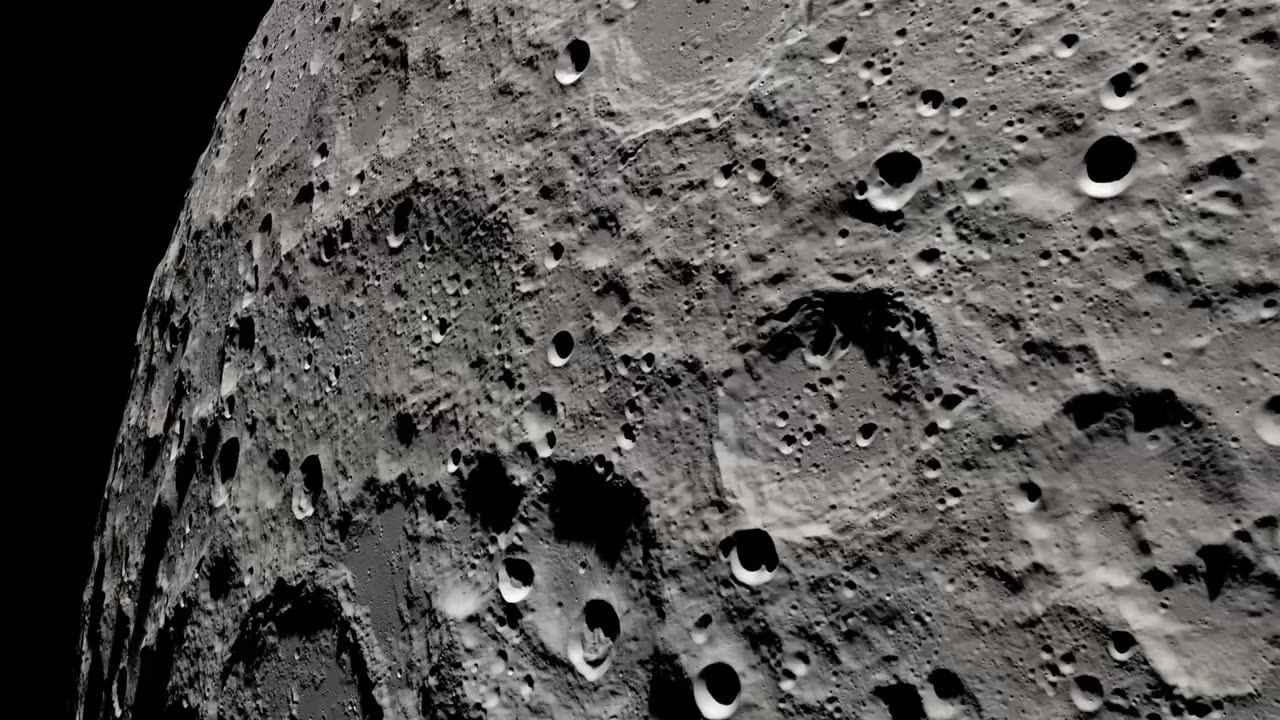Premium Only Content

Apollo 13: Unforgettable Glimpses of the Moon"
Apollo 13, a critical and dramatic mission in the Apollo program, offered unique and breathtaking views of the Moon from the vantage point of its spacecraft. Launched on April 11, 1970, with the goal of landing astronauts on the lunar surface, Apollo 13 encountered a life-threatening crisis when an oxygen tank exploded, forcing the crew to abort their lunar landing plans and focus on a safe return to Earth.
Despite not achieving its original objective, Apollo 13 still provided captivating views of the Moon during its journey. As the spacecraft looped around the Moon, the crew members—command module pilot John Swigert, lunar module pilot Fred Haise, and mission commander James Lovell—witnessed the lunar landscape from a distance, capturing their observations both in words and through the spacecraft's windows.
Here's a description of some of the views they might have experienced:
Surface Features: The astronauts would have seen a variety of craters, mountain ranges, and valleys on the lunar surface. The stark contrast between the bright lunar highlands and the darker maria (large, flat plains) would have been evident.
Moon's Horizon: The Moon lacks an atmosphere, so its horizon appears sharper and clearer than that of Earth. The astronauts would have noticed a more defined line between the lunar surface and the blackness of space.
Sunrises and Sunsets: The changing angle of sunlight would have created stunning visual effects as shadows lengthened and shortened across the Moon's surface. The play of light and shadow would have revealed the rugged terrain in intricate detail.
Crater Detail: Observing the intricate details of lunar craters—ranging from small, bowl-shaped depressions to larger, complex structures—would have been an awe-inspiring experience for the astronauts.
Earthrise and Earthset: While Apollo 13 didn't have the opportunity to capture the iconic "Earthrise" photo like Apollo 8 and Apollo 11, the astronauts could still have witnessed the Earth rising above the lunar horizon, providing a unique perspective of our home planet against the backdrop of space.
Starfield: The absence of atmospheric interference would have allowed the crew to see stars and constellations with exceptional clarity, offering a view of the cosmos that's difficult to replicate from Earth.
Silent Serenity: Beyond the visual aspects, the serenity and stillness of space would have been palpable as the spacecraft floated in lunar orbit. The quiet isolation of the Moon's surroundings would have created a profound sense of awe and reflection.
Apollo 13's unplanned flyby of the Moon, though fraught with challenges, offered a glimpse of the lunar surface and the celestial beauty of space. The crew's observations, experiences, and photographs contributed not only to our understanding of the Moon but also to our appreciation of the vastness and wonder of the universe.
-
 5:27:11
5:27:11
Akademiks
5 hours agoDiddy Trial Day 33: Verdict Watch! Jury Set to Deliberate and deliver Verdict!! (1/30)
11.4K2 -
 1:35:41
1:35:41
Russell Brand
3 hours ago“Go Back To South Africa” Feud REIGNITES As Trump THREATENS To Use DOGE To Investigate Musk! - SF606
147K41 -
 1:10:07
1:10:07
Sean Unpaved
2 hours agoFree Agency Frenzy: NBA Signings, Waivers, & Betting Scandals
42.2K1 -
 LIVE
LIVE
SportsPicks
4 hours agoCrick's Corner: Episode 41
28 watching -
 4:21
4:21
Coached by Karolina
1 day agoThis one thing that will STOP you from losing weight
39 -
 1:19:42
1:19:42
Simply Bitcoin
3 hours ago $4.14 earnedSuperpowers QUIETLY FLIPPING BULLISH on Bitcoin! | EP 1278
20.8K1 -
 1:59:25
1:59:25
The Charlie Kirk Show
3 hours agoMusk v. Trump Round 2 + Big Beautiful Deportations + The Fate of NY | Marlow, Homan, Caldwell | 7.1
47.8K19 -
 43:11
43:11
The Finance Hub
1 hour agoBREAKING: PAM BONDI JUST RELEASED A MAJOR BOMBSHELL!!!
3910 -

ROSE UNPLUGGED
2 hours agoRed Lines & Red Flags: Rose Catches Up with Silk
22 -
 1:04:52
1:04:52
Timcast
3 hours agoTrump DOJ To Being STRIPPING CITIZENSHIP From Criminals And DEPORTING THEM
165K87